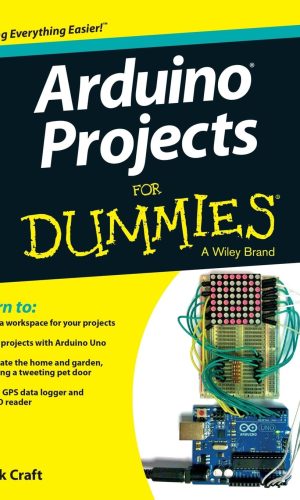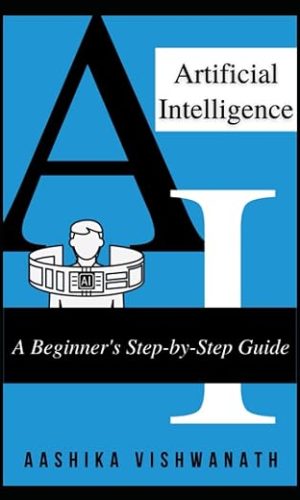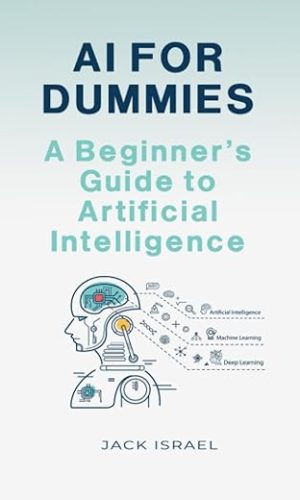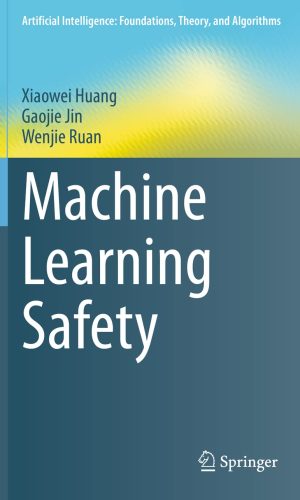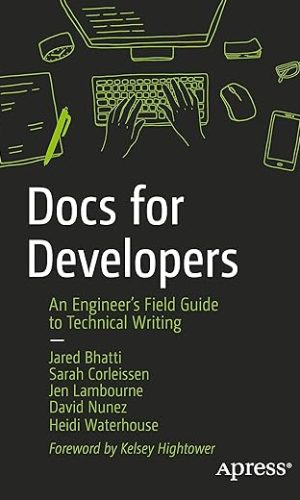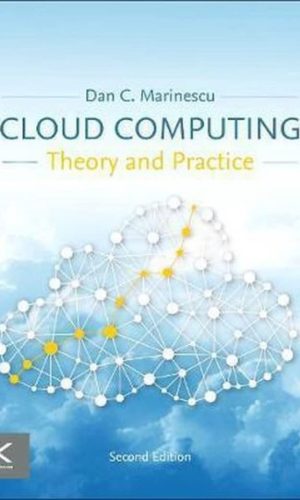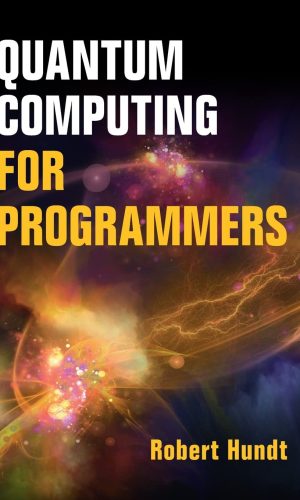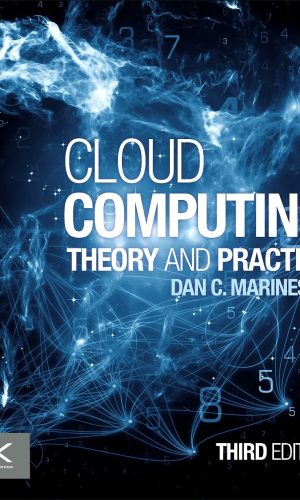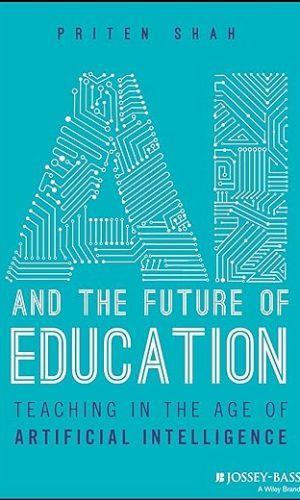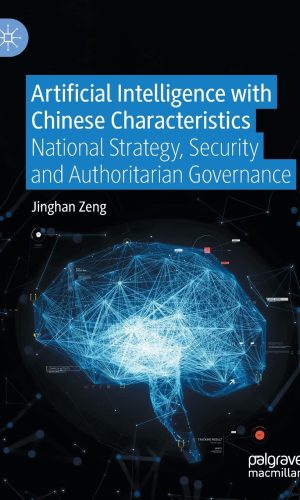Computer Science
-
Arduino Projects For Dummies
Discover all the amazing things you can do with Arduino
Arduino is a programmable circuit board that is being used by everyone from scientists, programmers, and hardware hackers to artists, designers, hobbyists, and engineers in order to add interactivity to objects and projects and experiment with programming and electronics. This easy-to-understand book is an ideal place to start if you are interested in learning more about Arduino’s vast capabilities. Featuring an array of cool projects, this Arduino beginner guide walks you through every step of each of the featured projects so that you can acquire a clear understanding of the different aspects of the Arduino board.
- Introduces Arduino basics to provide you with a solid foundation of understanding before you tackle your first project
- Features a variety of fun projects that show you how to do everything from automating your garden’s watering system to constructing a keypad entry system, installing a tweeting cat flap, building a robot car, and much more
- Provides an easy, hands-on approach to learning more about electronics, programming, and interaction design for Makers of all ages
Arduino Projects For Dummies is your guide to turning everyday electronics and plain old projects into incredible innovations.
Get Connected! To find out more about Brock Craft and his recent Arduino creations, visit www.facebook.com/ArduinoProjectsForDummies
Read more
£17.20£20.00Arduino Projects For Dummies
£17.20£20.00 -
Artificial Intelligence: A Beginner’s Step-by-Step Guide
When I was little, my parents told me stories of how they had to physically walk to a store, look through a huge catalog, ask if it was available, and finally hope it would be of decent quality to enjoy – all to watch a single movie.And I thought, “Wait. So, you’re telling me that you couldn’t just log into Netflix, see what movies they’ve recommended to you based on one’s you’ve liked in the past, and enjoy the whole thing within the click of a button? Then I thought, well exactly how is it that Netflix is able to magically know what I’ll like?”
So, I started to do some research – and little did I realize that at that moment, I stepped into a new realm.
I soon realized that it’s not just Netflix that has these so called “magical abilities”.
Look around you. A GPS – how can it predict our arrival time to such precision, accounting for all traffic, stops, and accidents, well before we even get on the road?
How does Spotify recommend the perfect songs specifically for us without fail?
Ever noticed how Google comes up with millions of search results catered exactly for us within the blink of an eye?
These are things that we take for granted – they’re just another part of life, right? But if you take a step back and ask: “How?”, do you know the answer?
Well, it’s two magical words:
ARTIFICIAL INTELLIGENCE
Artificial Intelligence (AI) is everywhere and is a part of the fabric we’re growing in today. Whether we like it or not, and whether we believe in AI or not, AI is here to stay, and it’s a must that we understand and embrace AI.
As I began dwelling deeper into this subject, I soon became fascinated with the field. My fears of evil robots taking over the world one day faded away when I knew that the more I learn about AI, the more I can influence how AI helps us in the future.
I believe that AI must be learnt by all, and from early on. This is not something you learn later in life, perhaps in a job. This is something you must embrace growing up.
Towards this goal, I started an AI club at my school and seeing the success and how it benefited students, I started a YouTube channel. Within a span of few months, the channel grew to over 6,500 subscribers world-wide, spanning 75+ countries. The outpouring of over 3500 comments on the channel on how the channel has benefited the community was uplifting.
Drawing inspiration from this, I felt that I could share my learnings and break down AI into easy-to-understand steps that you can benefit from.
AI is growing at a rapid pace. It’s estimated that AI will grow to a market size of $360+ billion by 2028. The opportunities that this fascinating field presents is tremendous. Whether you’re looking to upskill yourself, or pursue a career in AI, learning the basics is a must.
And hence this journey with this book.
I hope you enjoy and learn in the process!
You’ll learn all this and more:
Chapter 1. Introduction to Artificial intelligence
Chapter 2. AI Market, Adoption
Chapter 3. AI Trends & Career Opportunities
Chapter 4. Branches of Artificial intelligence
Chapter 5. Big Data
Chapter 6. Machine Learning
Chapter 7. AI vs ML vs DL vs DS
Chapter 8. Machine Learning Model: Step-By-Step
Chapter 9. Natural Language Processing
Chapter 10. Speech Recognition
Chapter 11. Artificial Intelligence Chatbots
Chapter 12. Creating NLP Chatbot Using Dialogflow
Chapter 13. Computer Vision
Chapter 14. An AI Application: Biotech & Healthcare
Chapter 15. Diving DeeperAbout the Author
Aashika Vishwanath is the founder of Acadaimy. Acadaimy empowers individuals to rapidly learn the fascinating field of Artificial Intelligence for free through interactive bite-sized videos on YouTube. Today, Acadaimy is helping over 6,500 subscribers worldwide across 75+ countries.
Read more
£3.50 -
AI for Dummies: A Beginner’s Guide to Artificial Intelligence
Unlock the mysteries of artificial intelligence and embark on an accessible journey into the world of AI with “AI for Dummies: A Beginner’s Guide to Artificial Intelligence.” Whether you’re new to AI or looking to expand your knowledge, this book offers a comprehensive and easy-to-understand introduction to the captivating world of artificial intelligence.Inside this guide, you’ll find:
Demystifying AI Concepts: Say goodbye to complex jargon! We’ll break down the fundamental concepts of AI, from its early beginnings to the cutting-edge advancements of today.
Understanding Machine Learning: Discover how AI learns through machine learning and the different approaches it uses, including supervised, unsupervised, and reinforcement learning.
Unveiling Neural Networks: Dive into the realm of neural networks, the backbone of deep learning, and explore how they’re transforming everything from image recognition to natural language processing.
AI in Everyday Life: Explore how AI is already impacting our lives, from voice-activated assistants to personalized recommendations, and get a glimpse of the AI-driven future.
Building Your First AI Project: Ready to get hands-on? Learn how to set up your development environment and choose the right programming language for your AI project.
Embracing the Future of AI: Discover the exciting possibilities that AI holds for healthcare, finance, sustainable solutions, and more, while navigating the ethical considerations that come with this transformative technology.
Written in a simple and engaging style, “AI for Dummies” ensures that you’ll grasp AI’s core principles without feeling overwhelmed. Whether you’re a student, a professional, or simply curious about AI’s potential, this book will empower you to explore the world of artificial intelligence and create a positive impact on the future.
Embark on your AI journey today and unlock the limitless possibilities of artificial intelligence. Buy “AI for Dummies: A Beginner’s Guide to Artificial Intelligence” now!
Read more
£5.90 -
Machine Learning Safety (Artificial Intelligence: Foundations, Theory, and Algorithms)
Machine learning algorithms allow computers to learn without being explicitly programmed. Their application is now spreading to highly sophisticated tasks across multiple domains, such as medical diagnostics or fully autonomous vehicles. While this development holds great potential, it also raises new safety concerns, as machine learning has many specificities that make its behaviour prediction and assessment very different from that for explicitly programmed software systems. This book addresses the main safety concerns with regard to machine learning, including its susceptibility to environmental noise and adversarial attacks. Such vulnerabilities have become a major roadblock to the deployment of machine learning in safety-critical applications. The book presents up-to-date techniques for adversarial attacks, which are used to assess the vulnerabilities of machine learning models; formal verification, which is used to determine if a trained machine learning model is free of vulnerabilities; and adversarial training, which is used to enhance the training process and reduce vulnerabilities.The book aims to improve readers’ awareness of the potential safety issues regarding machine learning models. In addition, it includes up-to-date techniques for dealing with these issues, equipping readers with not only technical knowledge but also hands-on practical skills.
Read more
£52.30£57.00 -
Tackling A Level Projects in Computer Science for OCR H446 – Step-by-step Essential Coursework A-Level Computing Project Guide NEA Non-exam Assessment A Level Computer Science…
Subject level: A Level Computer Science
Exam board: OCR
A clear, concise, step-by-step guide to your A Level Computer Science NEA project
Completing an A Level project is a huge undertaking for any student regardless of their competence in programming. The key to success and increasing results is to plan and write a strong report, evidencing what has been carried out.
This guide to Tackling A Level Projects in Computer Science is designed to give you clear and focused advice to help you maximise your mark potential when completing your OCR Computing coursework project.
Tailored for OCR, it will take you through all aspects of the project, from document setup, to each stage of the process. This guide will give you essential tips, examples and checklists to complete every stage before handing in a top project with pride and confidence.
This guide is suitable for use with any language or project idea being undertaken.
PG Online are multi-award-winning specialists in Computer Science with decades of teaching, examining and programming experience.
Features:
- Full breakdown and ‘how-to’ of everything you need to complete in the specification
- Checklist for each section of the project to ensure you’ve got everything in order
- Worked examples of sample project steps and solutions
- Examiners’ tips on what to do and what to avoid
- Clear layout with full-colour examples
- Comprehensive index
Read more
£10.50 -
Cloud Computing: Theory and Practice
Cloud Computing: Theory and Practice, Second Edition, provides students and IT professionals with an in-depth analysis of the cloud from the ground up. After an introduction to network-centric computing and network-centric content in Chapter One, the book is organized into four sections. Section One reviews basic concepts of concurrency and parallel and distributed systems. Section Two presents such critical components of the cloud ecosystem as cloud service providers, cloud access, cloud data storage, and cloud hardware and software. Section Three covers cloud applications and cloud security, while Section Four presents research topics in cloud computing. Specific topics covered include resource virtualization, resource management and scheduling, and advanced topics like the impact of scale on efficiency, cloud scheduling subject to deadlines, alternative cloud architectures, and vehicular clouds. An included glossary covers terms grouped in several categories, from general to services, virtualization, desirable attributes and security.Read more
£49.40 -
Quantum Computing (Second Edition): A pathway to quantum logic design (IOP ebooks)
Quantum computing is an emerging technology with the potential to have a significant impact on science and technology. Organised into four parts, this comprehensive second edition covers topics such as the basic concepts of quantum computing alongside quantum implementation of different circuits; the fault tolerant concepts of quantum computing; the concept of QCA alongside the design processes of different QCA circuits; and an overview of QCA fault-tolerant circuits and their design procedures. In addition to updates to first edition chapters to reflect developments in recent years, this new edition sees the inclusion of problems to every chapter and eight new chapters. This book will be a great help for quantum computing researchers, faculty members and students who can develop a working understanding of circuit-based quantum computing.
Key Features
- Contains eight new chapters as a significantly extended new edition
- Encompasses developments in the area, with a special focus on quantum cellular automata
- Is suitable as a supplementary text in advanced courses
- Includes problems within every chapter
Read more
£82.10£114.00 -
Quantum Computing for Programmers
This introduction to quantum computing from a classical programmer’s perspective is meant for students and practitioners alike. Over 25 fundamental algorithms are explained with full mathematical derivations and classical code for simulation, using an open-source code base developed from the ground up in Python and C++. After presenting the basics of quantum computing, the author focuses on algorithms and the infrastructure to simulate them efficiently, beginning with quantum teleportation, superdense coding, and Deutsch-Jozsa. Coverage of advanced algorithms includes the quantum supremacy experiment, quantum Fourier transform, phase estimation, Shor’s algorithm, Grover’s algorithm with derivatives, quantum random walks, and the Solovay–Kitaev algorithm for gate approximation. Quantum simulation is explored with the variational quantum eigensolver, quantum approximate optimization, and the Max-Cut and Subset-Sum algorithms. The book also discusses issues around programmer productivity, quantum noise, error correction, and challenges for quantum programming languages, compilers, and tools, with a final section on compiler techniques for transpilation.Read more
£47.40 -
Higher Computing Science New Edition: Revise and learn (Bright Red Study Guides)
Get exam ready with our new edition Higher Computing Science Study Guide!
Fully up-to-date with the latest course changes, this guide covers a wide range of topics to help build your knowledge and equip you with the tools needed to succeed at Higher. In this Study Guide, you will find:- Clear and concise course coverage and exam advice
- Activities and content that will introduce you to an advanced range of computational process across a variety of contemporary contexts.
- Don’t Forget pointers that offer advice on key facts and how to avoid common mistakes.
- Things to Do and Think About sections which provide you with plenty of opportunities to put your knowledge into practice.
This guide is also supported by a host of free additional material available on the BrightRED Digital Zone!
Contents:
- Software Design and Development
- Information System Design and Development
- Course Assessment and Value Added Unit
- Answers
- Index
Read more
£10.70 -
Cloud Computing: Theory and Practice
Cloud Computing: Theory and Practice, Third Edition provides students and IT professionals with an in-depth analysis of the cloud from the ground up. After an introduction to network-centric computing and network-centric content, the book reviews basic concepts of concurrency and parallel and distributed systems, presents critical components of the cloud ecosystem as cloud service providers, cloud access, cloud data storage, and cloud hardware and software, covers cloud applications and cloud security, and presents research topics in cloud computing.
Specific topics covered include resource virtualization, resource management and scheduling, and advanced topics like the impact of scale on efficiency, cloud scheduling subject to deadlines, alternative cloud architectures, and vehicular clouds. An included glossary covers terms grouped in several categories, from general to services, virtualization, desirable attributes and security.
- Presents updated content throughout chapters on concurrency, cloud hardware and software, challenges posed by big data, mobile applications and advanced topics
- Includes an expanded appendix that presents several cloud computing projects
- Provides more than 400 references in the text, including recent research results in several areas related to cloud computing
Read more
£47.50£52.20Cloud Computing: Theory and Practice
£47.50£52.20 -
AI and the Future of Education: Teaching in the Age of Artificial Intelligence
Clear away the fog surrounding AI in education―and regain your peace of mind
Among teachers, there is a cloud of rumors, confusion, and fear surrounding the rise of artificial intelligence. AI and the Future of Education is a timely response to this general state of panic, showing you that AI is a tool to leverage, not a threat to teaching and learning. By understanding what AI is, what it does, and how it can be used to enhance education, you can let go of anxiety and uncertainty, and learn to embrace artificial intelligence.
It’s true that, along with tremendous opportunities, AI presents some challenges for the field of education. In this book, Priten Shah, a Harvard M.Ed. with a robust background in educational innovation, helps you face these challenges head on, so you can gain the knowledge and skills you need to use AI effectively in your classroom. Thanks to this thorough consideration of ethical considerations and practical approaches, you can develop your own strategy for leveraging AI in administrative tasks, lesson design, professional development, and beyond.
- Understand what AI and machine learning are, and learn about new developments like ChatGPT
- Discover strategies for engaging students more fully using AI
- Automate administrative tasks, grading and feedback, and assessments
- Use AI in innovative ways to promote higher-order thinking skills
- Examine ethical considerations of AI, including the achievement gap, privacy concerns, and bias
For K-12 educators, as well as leaders and policymakers who want to understand the role of technology in education, AI and the Future of Education is a valuable resource that can change AI from an unknown entity to an indispensable tool.
Read more
£15.20£18.00 -
Artificial Intelligence with Chinese Characteristics: National Strategy, Security and Authoritarian Governance
“This book provides the first book-lengthy study focusing on Artificial Intelligence (AI) with Chinese characteristics, in line with China’s open ambition of becoming an AI superpower by 2030. China’s unique domestic politics has developed distinct characteristics for its AI approach. By analysing national strategy, security and governance aspects of AI in China, this book argues that China’s AI approach is sophisticated and multifaceted, and it has brought about both considerable benefits and challenges to China.
First, many characterize China’s AI approach as a nationally concerted top-down geopolitical strategy to advance Beijing’s unified objective. This book argues that this view is mistaken. It shows that China’s AI politics is largely shaped by economically rather than geopolitically motivated domestic stakeholders. In addition, China’s national AI plan is an upgrade of existing local AI initiatives to the national level, reflecting a bottom-up development. Thus, China’s AI strategy is more of a political manifesto rather than a concrete policy plan.
The second part of the book discusses how the Chinese central government has been securitizing AI in order to mobilize local states, market actors, intellectuals and the general public. This security discourse is built on China’s historical anxieties about technology, regime security needs and the growing tension caused by great power competition. Despite its help in convincing domestic actors, however, this securitization trend may undermine key AI objectives.
The third part of the book studies the Chinese governance approach to the use of AI. It argues that China’s bold AI practices are part of its broad and incoherent adaptation strategy to governance by digital means. AI is part of a digital technology package that the Chinese authoritarian regime has actively employed not only to improve public services but also to strengthen its authoritarian governance. While China’s AI progress benefits from its unique political and social environment, its ambitious AI plan contains considerable risks. China’s approach is gambling on its success in (a) delivering a booming AI economy, (b) ensuring a smooth social transformation to the age of AI, and (c) proving ideological superiority of its authoritarian and communist values.
This book suggests that a more accurate understanding of AI with Chinese characteristics is essential in order to inform the debate regarding what lessons can be learnt from China’s AI approach and how to respond to China’s rise as the AI leader if not superpower.”
Read more
£20.90£23.70 -
Minds of Metal: The Evolution and Essence of AI, Machine Learning, and Robotics: Handbook for Everyone
Set off on an engaging exploration of advanced technology with “Minds of Metal.” This detailed guide simplifies the intricate realms of Artificial Intelligence (AI), Machine Learning, and Robotics, making them approachable for everyone from novices to tech enthusiasts.
Trace the Development: Journey through the intriguing history of AI and robotics, from their origins in ancient myths to today’s groundbreaking technologies. Learn about the key events and innovators who have steered technological advancement.
The Heart of AI: Delve into the fundamental principles and ideas behind AI. Understand neural networks, deep learning, natural language processing, and computer vision. Discover how these technologies are transforming industries and enhancing lives.
Clarifying Machine Learning: This section explains the algorithms and methods that underpin machine learning. Expect straightforward explanations and real-world examples, covering everything from decision trees to predictive analytics.
The World of Robotics: Enter the realm of robotics, where machines come alive. Learn about the mechanics, programming, and potential of robots in various fields, including healthcare, manufacturing, and space exploration.
A Guide for All: “Minds of Metal” caters to both the curious newcomer and the experienced tech aficionado. It includes a glossary to help you understand AI terminology, along with discussions on the ethical use of these technologies.
Peering into the Future: This book does more than just explain AI, Machine Learning, and Robotics. It also offers a look into the thrilling future they hold. Grasp the ethical challenges, societal impacts, and potential opportunities that await.
Ready to explore the minds of metal? “Minds of Metal” is your gateway to comprehending, exploring, and appreciating the technological wonders shaping our era. Suitable for students, professionals, or anyone curious about the future, this book provides the knowledge required to navigate the world of AI, Machine Learning, and Robotics.
Read more
£7.10 -
Hands-On Machine Learning with Scikit-Learn, Keras, and TensorFlow 3e: Concepts, Tools, and Techniques to Build Intelligent Systems
Through a recent series of breakthroughs, deep learning has boosted the entire field of machine learning. Now, even programmers who know close to nothing about this technology can use simple, efficient tools to implement programs capable of learning from data. This best-selling book uses concrete examples, minimal theory, and production-ready Python frameworks–scikit-learn, Keras, and TensorFlow–to help you gain an intuitive understanding of the concepts and tools for building intelligent systems. With this updated third edition, author Aurelien Geron explores a range of techniques, starting with simple linear regression and progressing to deep neural networks. Numerous code examples and exercises throughout the book help you apply what you’ve learned. Programming experience is all you need to get started. Use scikit-learn to track an example machine learning project end to end Explore several models, including support vector machines, decision trees, random forests, and ensemble methods Exploit unsupervised learning techniques such as dimensionality reduction, clustering, and anomaly detection Dive into neural net architectures, including convolutional nets, recurrent nets, generative adversarial networks, and transformers Use TensorFlow and Keras to build and train neural nets for computer vision, natural language processing, generative models, and deep reinforcement learning Train neural nets using multiple GPUs and deploy them at scale using Google’s Vertex AIRead more
£52.60£68.40


